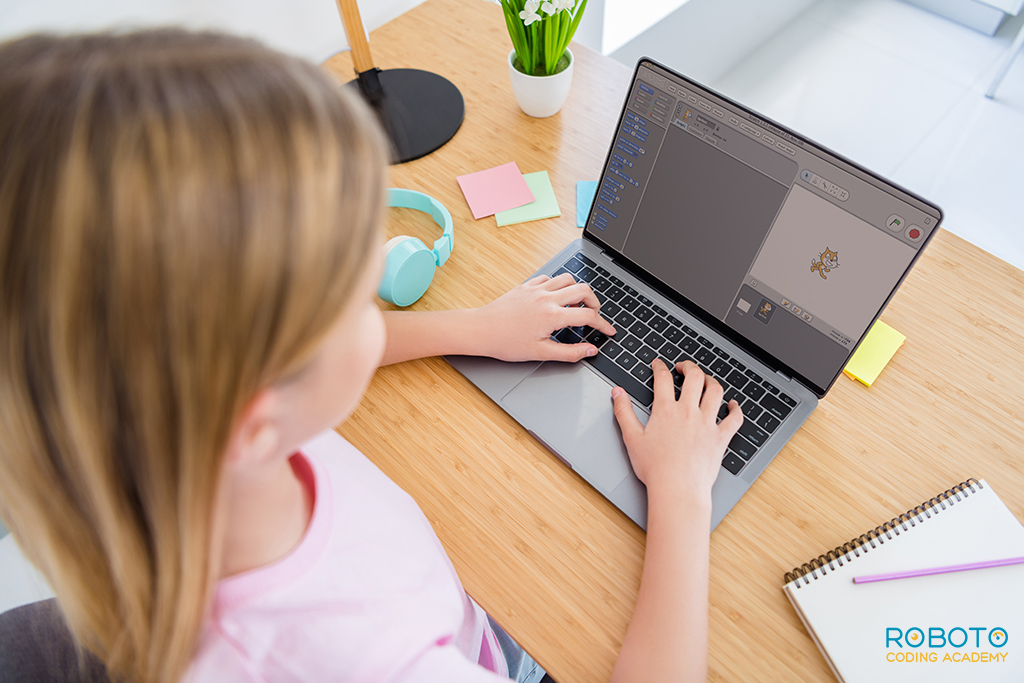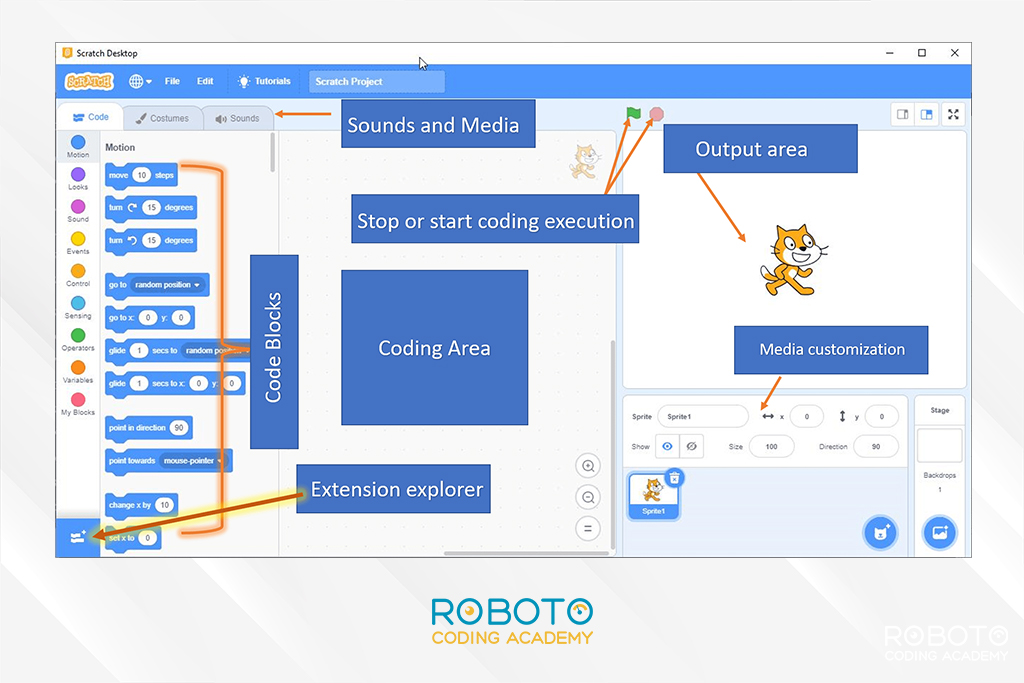Coding For Kids: What Is Block-Based Coding?

There are varying degrees of difficulty with Scratch, Python, and Javascript. For students with little to no programming experience, Scratch is a great place to begin.
Scratch is a block-coding language that involves the dragging and placing of logic "blocks" on a canvas. Despite its limitations, Scratch shares many coding fundamentals with the other two, including loops, conditionals, and variables.
For at least one month, allowing your child to spend four hours each week working on their own projects will be valuable in developing their intuition, logical thinking skills, and excitement.
Coding classes at Roboto can also assist your child in picking up Scratch quickly. For primary school students, advanced Scratch is a good choice, while pre-schoolers should look into Scratch coding for kids.
The method of block-based coding involves a drag-and-drop learning environment, letting designers use coding instructions or "blocks" to be able to construct animated stories and games. With this activity, students can gain a solid foundation in computational thinking through visuals rather than through text-based coding.
1. What are “blocks”?

The term "blocks" refers to the strings of instructions that a user places into their creation in order to tell it what to do.
The Scratch programming language, for example, is block-based and is one of the most popular languages for kids. In Scratch programming, blocks are defined as:
Motion Blocks: These can be used to tell sprites (Scratch images) how to move and turn according to the sprite itself, other sprites, or a predetermined location.
For instance, using just one block, creators can direct a sprite to go forward 10 steps or turn 15 degrees to the right.
Looks blocks: These can be used to alter a sprite's appearance, to change the sprite's voice or thoughts, to change costumes or backgrounds, and to alter its size or graphic effects.
A creator, for example, can instruct their sprite to display a text bubble and say “Hello!” for a period of two seconds.
Sound blocks: These are used to add sound to a story or game, to alter sound effects, or even to change the volume of various sounds.
In the example above, a sound block could be used to start playing a "meow" sound, and another sound block could be used to stop all sounds.
The blocks in Scratch programming provide a valuable learning experience, as kids quickly learn that their programs will only run in the order they tell them to, and will only execute code in the order they instruct.
2. What are “sprites”?
Sprites can be thought of as images, which can be characters or objects. In Scratch programming, creating a character is called "painting a sprite." It is easy to create sprites using tools like the shape tool, and you can also alter their colour effects with a looks block.
3. With drag-and-drop block coding, what can you create?
Through block-based coding and programs such as Scratch, kids can let their imaginations take flight, creating any number of sprites and bringing them to life through animation and storytelling.
Here are some examples of what kids can create on Scratch programming:
Clicker games in which to earn points, a player must click on things like popping balloons in order to get points. Each time a new balloon of a different colour is clicked, a new one pops up in a different location on the screen.
Chase games let you control a character that searches for another character or object to chase. An octopus, for example, can try to catch a fish swimming across the screen randomly.
Pong games are just what the name implies; a bouncing ball is attempted to be kept from hitting the ground with a paddle that is controlled by a mouse.
Games such as Make it Fly give players the ability to manipulate their sprite by using up and down arrows, for example, a bird that can move up and down to catch a bug that flies across the screen.
In adventure games, you collect objects as you advance through multiple levels on different backgrounds as you progress through the game.
Coding Classes For Kids
For kids who enjoy video games and programming, our coding school combines their two passions by offering game design and scratch programming as part of our Genius Coder Programme!
With block-based coding, young learners can get a more tangible experience with coding. In addition to on-screen content, kids can delve deeper into coding through something like Scratch Cards, which offer a physical, visual representation of different coding lessons and concepts.
Our weekly coding classes provide an excellent opportunity for students to interact while they learn block-based coding from an instructor with a small group of students.
Sign up for a free trial today to get your kids started on Scratch programming!